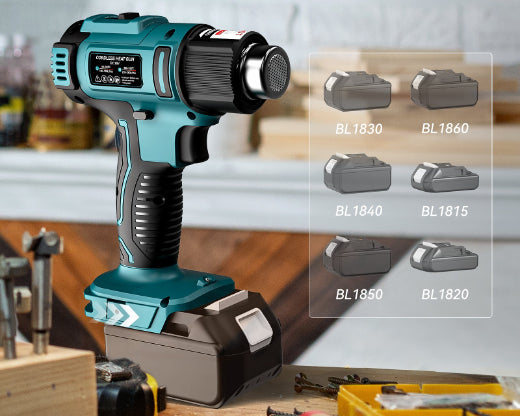
SHOULD YOU REMOVE LITHIUM BATTERIES FROM POWER TOOLS WHEN NOT IN USE?
We’ve all been there: the job’s done, the tool’s warm, and you toss it on the shelf with the battery still snug in place. No harm, right? Or… is that battery quietly draining away like a leaky faucet you didn’t notice? The truth is, lithium battery storage plays a big role in battery life and tool safety
Before your next project starts with a dead tool and a lot of regret, let’s clear up the mystery: should you really remove the battery when you're not using your power tools? Let’s dig in.
Why Is It Important to Remove the Battery When Not In Use
The lithium-ion batteries used in cordless power tools are durable, but they’re still sensitive to certain conditions. It might seem convenient to leave the battery connected to your tool, but doing so can lead to unnecessary wear and even safety risks. It’s a small habit that can make a big difference.
1. Prolong Battery Life
One of the simplest ways to extend the life of your power tool batteries is proper storage. Leaving a battery connected to a tool can slowly drain the charge over time, even if the tool isn’t in use. Worse, if the trigger or electronic controls are accidentally bumped or engaged, it could lead to deep discharge, which damages lithium-ion cells.
2. Safety First
Cordless tools are powerful, and many can be dangerous if activated accidentally. A dropped or mishandled tool with the battery installed could inadvertently power on, risking injury or damage to your surroundings.
Especially if you have kids around or store your tools in shared spaces, removing the battery is a smart and easy safety precaution.
3. Avoid Potential Damage to the Tool
Moisture, dust, and temperature swings in garages or sheds can play havoc on electronics. Leaving the battery connected exposes both the battery terminals and the tool’s electrical contacts to those environmental risks.
4. Temperature Matters
Lithium-ion batteries don’t like extreme temperatures. Leaving a battery connected to a tool in a hot garage or freezing shed can shorten its life or even permanently damage it.
How to Clean and Store Lithium Ion Batteries When They Are Not in Use
- Clean the Battery Terminals: Wipe the battery contacts with a clean, dry cloth or isopropyl alcohol to remove dust or grime.
- Store in a Dry, Cool Place: Keep batteries in a temperature-controlled, dry spot away from direct sunlight or freezing temperatures.
- Use a Battery Case or Container: Use a battery case or plastic container to keep terminals protected and organized.
- Charge to the Right Level for Storage: Long-term storage with a partial charge helps maintain battery health and prevents deep discharge.
- Label or Rotate Batteries: Mark or label batteries to track usage and make sure they all get regular use.
Therefore, should you remove batteries from power tools when not in use? Yes. It’s a simple lithium battery storage habit that protects your investment, keeps your workspace safer, and ensures that your cordless tools stay reliable when you need them most. Taking a few extra seconds to pop the battery off might seem small - but it pays off in longer battery life, fewer safety risks, and better overall tool care.






